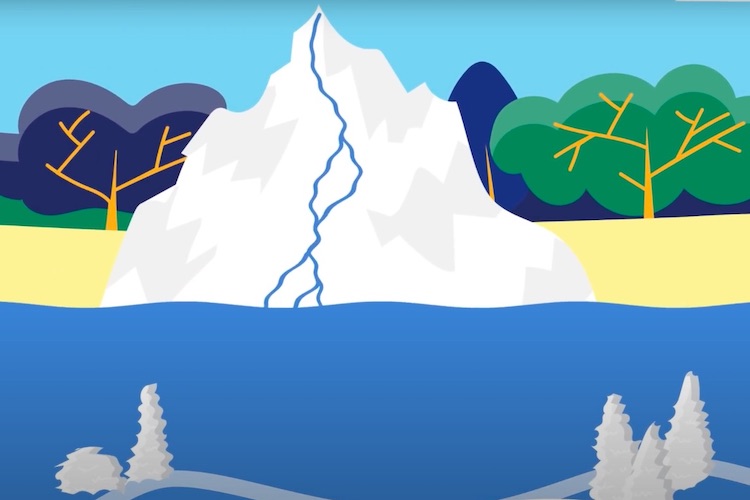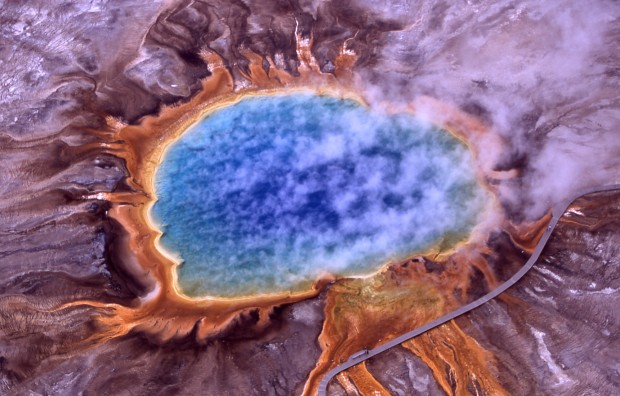Discovery of Molecular Clouds in our Tiny Neighbor...
The dense cores of star-forming clouds have been observed for the first time in a tiny dwarf galaxy.

In August Science published an article called “A warm and poorly ventilated deep Arctic Mediterranean during the last glacial period” about the possible relationship between changes in circulation of water in the Arctic Ocean and Nordic Seas and the climate of that region. We asked one of the authors, Dr David Thornalley from the Department of Geography at University College London, to comment on this research.
Our recent work has examined how the circulation of the ocean north of Iceland – the combined Arctic Ocean and Nordic Seas, called the Arctic Mediterranean – changed since the end of the last glacial period (~20,000-30,000 years ago). Although it has long been suspected that the circulation of the glacial Arctic Mediterranean differed from today, our work provided important new insight into just how extreme the circulation changes were.

Today, the ocean is cooled by the atmosphere during winter, producing large volumes of dense water that sink and flush through the deep Arctic Mediterranean. However, in contrast to the vigorous circulation of today, we found that during the last glacial period, the deep Arctic Mediterranean became like a giant stagnant pond, with deep waters not being replenished for up to 10,000 years. We think that this was caused by the thick and extensive layer of sea ice and fresh water that covered much of the Arctic Mediterranean during the last glacial, preventing the atmosphere from cooling and densifying the underlying ocean.
The story became even more interesting, though, when we examined the properties of the deep water. As well as being stagnant, the deep waters in the Arctic Mediterranean were also warm. It is likely that as the deep water remained stagnant at the bottom of the ocean, it slowly accumulated geothermal heat from the seafloor, until a critical point was reached when the ocean became unstable. Suddenly, the heat previously stored in the deep Arctic Mediterranean was released to the upper ocean. The timing of this event coincides with the occurrence of evidence for a massive release of meltwater into the Nordic Seas. We hypothesized that this input of melt water was caused by the release of deep ocean heat, which melted icebergs, sea-ice and surrounding marine-terminating ice sheets. Therefore our work suggests that the build-up and subsequent release of warm, stagnant water from the deep Arctic Ocean and Nordic Seas may have played a role in ending the last glacial period within the Arctic region.
Our work was motivated by an overall aim to help develop our understanding of the role of the ocean in climate change. Changes in the circulation of the ocean are implicated in past, present and future climate change because the ocean is capable of redistributing vast quantities of heat around the globe, as well storing and redistributing ocean carbon (a process closely tied to the regulation of atmospheric carbon dioxide levels). To help predict the role of the ocean in future climate change, it is useful to investigate how ocean circulation changed in the past and what the associated climate effects were. These past examples of ocean circulation change can also be used to help test how well models simulate such climate events.
One of the most widely studied intervals is the last glacial period. Although previous studies had examined the glacial Arctic Mediterranean, we applied new methods to provide further insight into how the circulation differed in the past. In order to reconstruct the past changes in the ocean, we examined the composition of calcite shells of small single-celled organisms (called foraminifera) that are found in ocean floor sediment. The shells of these organisms record the chemistry of the deep ocean at the time they were living, enabling us to reconstruct past changes in ocean circulation. By measuring the radiocarbon content of these shells, we were able to determine how rapidly deep water was being formed in the Arctic Mediterranean. It was only because of recent analytical developments in the measurement of radiocarbon concentrations in foraminifera that we were able to obtain radiocarbon-based estimates on the past circulation of this region.
Applying these new techniques to the glacial Arctic Mediterranean revealed our somewhat unexpected results. However, earlier work that we had conducted from within the North Atlantic had hinted at the possibility that there may be some very old water stored in the Arctic Mediterranean that occasionally leaked out. The new results therefore did not come as a total surprise to us. Furthermore, when you take a step back and think about the conditions that prevailed in this region during the last glacial, and how unfavourable they were for the formation of deep water, the results seem to make sense. Yet, I think when other researchers first hear about these data they are still somewhat shocked.
Paleoceanography is a relatively young scientific field and there is much left to learn. The continued development and application of novel techniques is yielding important new results. The unexpected and complex past behavior of the ocean that is being revealed by this endeavor makes paleoceanography an excititng subject area to be working within. Yet at the same time, we are also building up sufficient datasets to place firmer, more precise constraints on past ocean circulation regimes, which can then be used to robustly test the performance of climate models. These two branches of the field – exploring the frontier of our knowledge and rigorously obtaining comprehensive evidence to test hypotheses and model predictions – are characteristic of a maturing science. Both areas are important in their own right since both processes are crucial in building our confidence in predictions about the likely nature of future climate change. Reflecting these considerations, our next steps will be to develop further datasets to provide a more detailed picture of the timing and mechanisms involved in the build up and release of heat from the deep Arctic Mediterrnaean, but also to continue applying new techniques and ocean proxies to unstudied areas to hopefully discover previously unknown aspects of past ocean circulation.

The dense cores of star-forming clouds have been observed for the first time in a tiny dwarf galaxy.

Physicist John Ellis on discovery of dark matter, ways to look for it and what dark matter particles might be

Physicist Wolfgang Ketterle on quantum simulation, atomic Lego pieces, and evaporative cooling